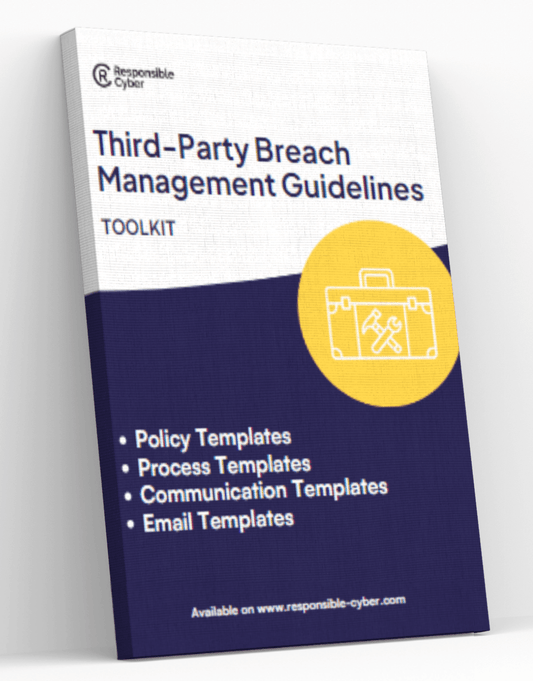What are the phases of the TPRM lifecycle?

Managing third parties extends far beyond a one-time assessment; it requires continuous oversight throughout the entire third-party management (TPM) lifecycle. This lifecycle encompasses various stages, including screening, onboarding, assessment, risk mitigation, monitoring, and offboarding. By effectively managing these stages, organizations can streamline workflows, scale their TPM programs, save time, resources, and reduce risk.
Why the TPM Lifecycle Matters
The importance of the TPM lifecycle has grown significantly, especially as security and risk management teams adapt to the rapid digital transformation prompted by an increase in large-scale cyberattacks. Consequently, TPM has become a focal point for organizations, with security teams facing board-level pressure to implement comprehensive management programs. This pressure necessitates a thorough evaluation of every aspect of the TPM lifecycle.
Upon closer examination, it becomes evident that third-party and third-party risk assessments play a crucial role in maintaining a strong security posture across an organization. Despite the critical nature of the vendor ecosystem in mitigating risk, many organizations fail to appropriately assess their third parties, or, in some cases, do not assess them at all. As a result, security teams often lack visibility into their organization’s third-party ecosystem, how these parties are utilized, and what measures they have in place to protect data. This oversight increases risks in cybersecurity, privacy, ethics and compliance, and environmental, social, and governance (ESG) concerns.
Implementing a Comprehensive TPM Program
Organizations must have a clear understanding of their vendor ecosystem, which begins with a solid grasp of the TPM lifecycle. The TPM lifecycle consists of several stages, each outlining a typical relationship with a third party. Third-Party Risk Management (TPRM) or "third-party relationship management" better articulates the ongoing nature of these engagements. The lifecycle typically includes the following phases:
Phase 1: Third-Party Identification and Screening
Identifying current and potential third parties involves multiple approaches, such as using existing information, integrating with existing technologies, conducting assessments or interviews, and leveraging external risk ratings data. Screening third parties against sanctions lists and other sources is also essential at this stage to identify any ethical or compliance concerns that could make the relationship too risky.
Organizations must identify unique risks that vendors may pose and align an appropriate assessment and monitoring approach based on the inherent risk of each relationship. Segmenting third parties into criticality tiers improves efficiency in the TPM program by prioritizing the most critical third parties.
Phase 2: Evaluation and Selection
During this phase, organizations consider Requests for Proposals (RFPs) and select the third parties that best meet their business needs. The selection process involves evaluating various factors unique to the organization’s requirements.
Phase 3: Risk Assessment
Conducting third-party risk assessments can be time-consuming and resource-intensive. Many organizations utilize third-party risk exchanges to access pre-completed assessments or automate previously manual tasks. The goal is to understand the risks associated with each third party, using automated risk flagging to identify issues based on their responses. TPM programs must consider not only cyber risks but also a broader spectrum of potential threats.
Phase 4: Risk Mitigation
After assessing risks, organizations can begin mitigation efforts. This process includes risk flagging, score designation, evaluating risk against the organization’s risk appetite, treatment, and control validation, and continuous monitoring for increased risk levels (e.g., data breaches). When a third-party risk is flagged, it is crucial to assign a risk owner to oversee remediation actions and provide specific advice based on embedded regulations, standards, and frameworks.
Phase 5: Contracting and Procurement
Often done in parallel with risk mitigation, contracting and procurement are critical from a third-party management perspective. Contracts should be reviewed for key provisions, clauses, and terms relevant to TPM, ensuring that all necessary details are addressed.
Phase 6: Reporting and Recordkeeping
Maintaining compliance requires detailed recordkeeping, which is challenging at scale without TPM software. Such software can automate report scheduling and share key details with stakeholders. Metrics can also serve as automation triggers, such as notifying stakeholders of new high-risk situations.
Phase 7: Ongoing Monitoring
An assessment provides a snapshot of a third party’s risks at a specific moment in time. However, ongoing monitoring throughout the relationship is crucial, requiring adaptation when new issues arise. Utilizing risk data providers can enhance real-time monitoring of high-risk third parties. Automation can also trigger actions based on contract expirations, security certification lapses, detected breaches, and sanctions.
Phase 8: Third-Party Offboarding
A thorough offboarding procedure is essential for security and recordkeeping. Organizations should develop an offboarding checklist to ensure all necessary measures are taken, both internally and externally. Maintaining a detailed evidence trail of these activities is critical for demonstrating compliance during regulatory inquiries or audits.
The Future of TPM
Organizations that leverage data, automate manual tasks, and set clear risk appetites will have a competitive edge in the coming years, enabling faster, risk-based business decisions.
More About RiskImmune
The RiskImmune Third-Party Management solution simplifies collaboration with third parties by reducing blind spots across trust domains. It accelerates the onboarding process, enhances business resilience through ongoing monitoring, and integrates data-driven decision-making into the third-party lifecycle.







